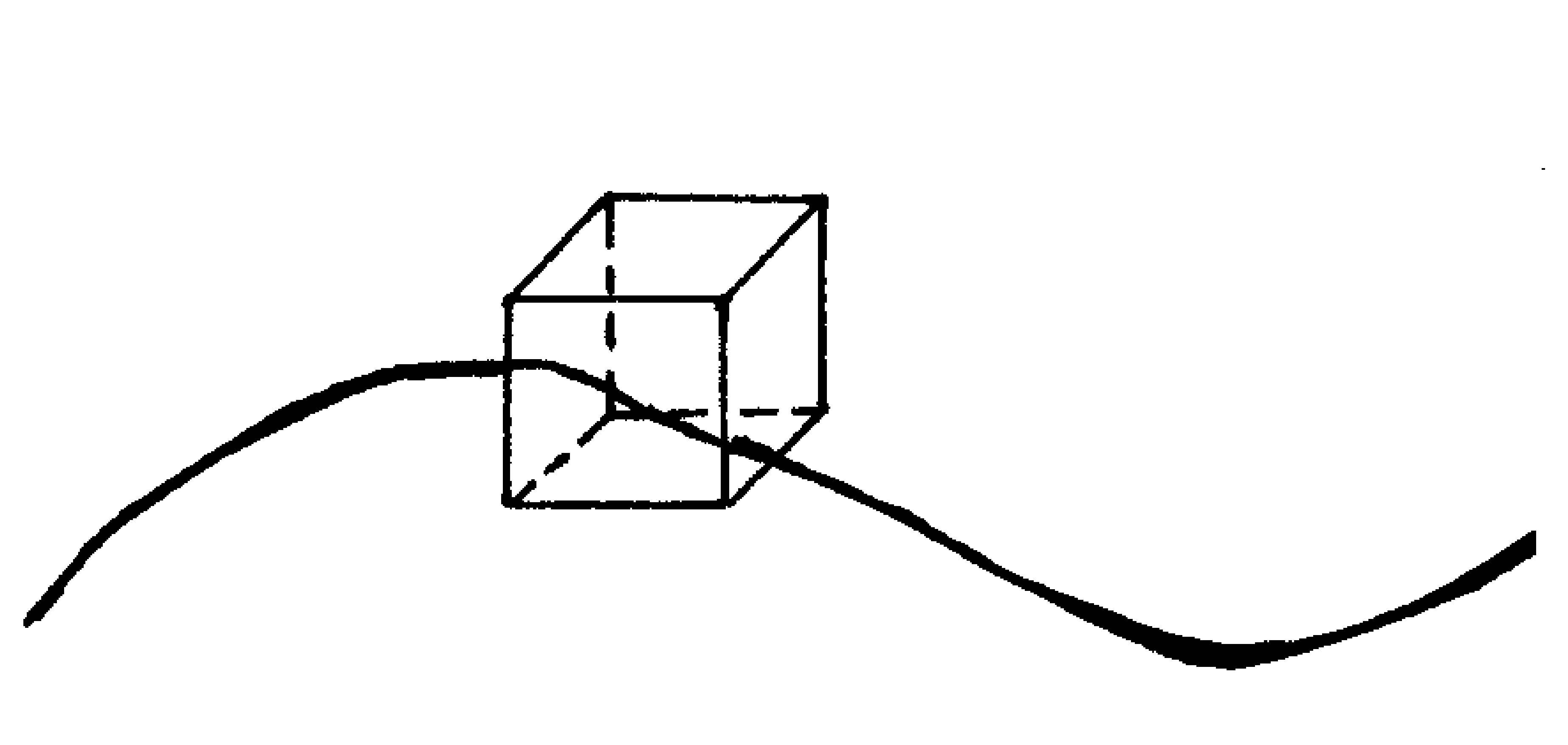3.3.1: Hipótesis. El continuo óptic
- Page ID
- 51117
Esta segunda aproximación nos conducirá a caracterizar cualquier substancia por un parámetro llamado índice de refracción. Utilizaremos las ecuaciones de MAXWELL macroscópicas o en la materia, ecMm.
En la materia ordinaria puede haber del orden de \(10^{28}\) átomos por metro cúbico. La interacción electromagnética mutua de esta miríada de átomos constituye un problema formidable. Si consideramos el volumen de un cubo cuyas aristas sean longitudes de onda \(\lambda\) en el visible, encontraremos que en \(\lambda^{3}\) hay del orden de \(10^{10}\) átomos \({ }^{1}\). Esto nos indica que no podemos hacer la aproximación de partículas independientes. Pero sí
- aprovecharemos lo próximos que se encuentran entre sí los átomos. Podemos aventurar que en todo el \(\Delta V\) las cargas verán el mismo campo, pues las variaciones espaciales de éste se producen en el orden de la longitud de onda, que es mucho mayor que \(\Delta V^{\frac{1}{3}}\).

2. prescindiremos del carácter discreto de la materia. Esto lo haremos introduciendo promedios espaciales de las magnitudes implicadas: \(\mathbf{E}, \mathbf{B}, \rho, \mathbf{j}\). Esto simplificará obviamente la descripción. El problema es que ahora no vamos a poder separar campo incidente de campo reemitido (debido a la proximidad de las cargas): \(\mathbf{E}, \mathbf{B}\) tendrán dos componentes indistinguibles.
Vamos a utilizar un pequeño volumen esférico \(\Delta V\) parametrizado de modo que \(\mathbf{r}\) sea la coordenada del centro de la esfera y \(\mathbf{r}+\mathbf{r}^{\prime} \in \Delta V\). Sobre este volumen los promedios se escriben como sigue:
\[
\mathbf{E}_{m a c}(\mathbf{r}, t)=\frac{1}{\Delta V} \int_{\Delta V} \mathbf{E}_{m i c}\left(\mathbf{r}+\mathbf{r}^{\prime}, t\right) d^{3} \mathbf{r}^{\prime} \notag
\]
los subíndices distinguen campo microscópico de campo macroscópico (que por ser un promedio no hace caso de las variaciones a escala atómica).
La longitud de onda de la radiación es tan grande que ésta no "ve" el carácter discreto de la materia. De nuevo las hipótesis de la aproximación fenomenológica están pendientes de justificación mediante experimento.
Utilizaremos la notación siguiente para el promedio espacial
\[
\left\langle\mathbf{E}_{m i c}\right\rangle \equiv \mathbf{E}_{m a c} \notag
\]
_________________________________________________________
1. en la atmósfera por ejemplo, tenemos \( 10^{7} \) átomos.

